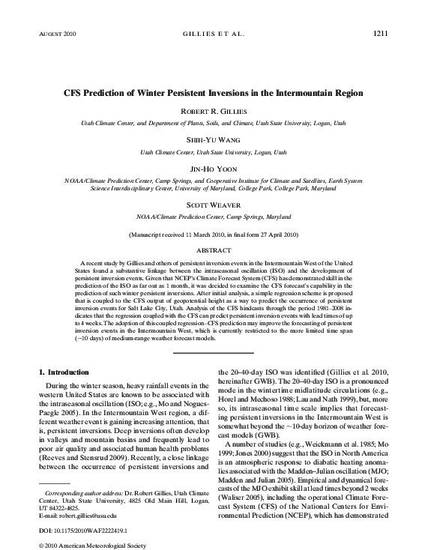
A recent study by Gillies and others of persistent inversion events in the Intermountain West of the United States found a substantive linkage between the intraseasonal oscillation (ISO) and the development of persistent inversion events. Given that NCEP’s Climate Forecast System (CFS) has demonstrated skill in the prediction of the ISO as far out as 1 month, it was decided to examine the CFS forecast’s capability in the prediction of such winter persistent inversions. After initial analysis, a simple regression scheme is proposed that is coupled to the CFS output of geopotential height as a way to predict the occurrence of persistent inversion events for Salt Lake City, Utah. Analysis of the CFS hindcasts through the period 1981–2008 indicates that the regression coupled with the CFS can predict persistent inversion events with lead times of up to 4 weeks. The adoption of this coupled regression–CFS prediction may improve the forecasting of persistent inversion events in the Intermountain West, which is currently restricted to the more limited time span (;10 days) of medium-range weather forecast models.
